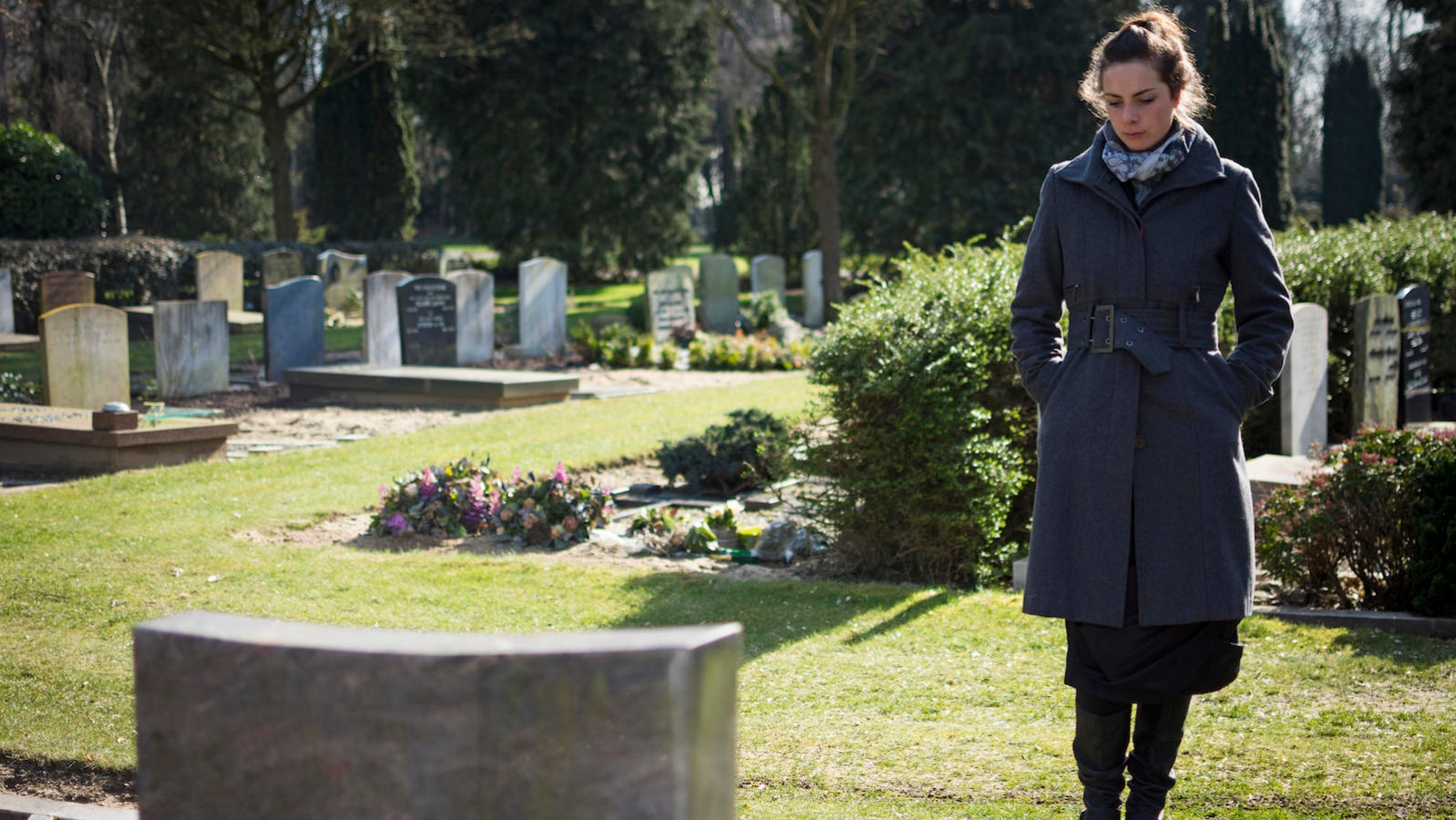A tombstone serves to identify the grave so that relatives will find it when they visit, honor the memory of the deceased, and identify a place of burial so that kohanim (descendants of ancient Jewish priests) will avoid it as required by Jewish law.
Jewish tradition makes no stipulation as to the size or type of marker or monument, but most cemeteries have specific guidelines. The Jewish teaching that all are equal in death often serves as a guide to choosing an appropriate headstone.
The marker usually includes: the English and Hebrew name of the deceased, the dates of birth and death in English and Hebrew, and the relationship to other family members (i.e., father/mother, husband/wife, grandfather/grandmother, sister/ brother, etc.). Also, one often finds the Hebrew letters pay nun, standing for “po nikbar(ah), here is buried,” and the letters tav, nun, tzadee, bet, hay, standing for the phrase “May his/her soul be bound up in the bond of eternal life.”
Unveiling
It is customary for the grave marker to be put in place and for an unveiling ceremony to be held after the Kaddish period [11 months for parents and 30 days for other close relatives] is over, but no later than one year after the death. While many families wait until almost the full year has passed to do the unveiling, it may be done sooner; in Israel the stone is usually placed soon after sheloshim [the first 30 days of mourning].
The unveiling ceremony consists of the recitation of Psalms, a very brief eulogy encapsulating the most salient characteristics of the deceased, removing the cloth covering the headstone, the El Maleh Rahamim prayer and the Mourner’s Kaddish. Traditionally, the Kaddish is not recited aloud if no minyan [quorum of 10] is present.
READ: Why Do Jews Put Stones on Graves?
It is customary, before leaving the gravesite, to place a small stone on the marker to indicate that someone has visited the grave. This tradition may also reflect the biblical practice of marking the grave with a pile of stones. Or, it may be the end result of the custom of writing notes to the deceased and pushing them into crevices in the headstone just as notes are pushed into the Western Wall in Jerusalem. When no crevice could be found, the note was weighted down with a stone. In time, the paper disintegrated or blew away leaving only the stone. Thus, some began to think that the leaving of a stone was the custom… and so it became the custom.
Visiting the Grave
While visitation of the grave is permitted at almost any time, excessive visits are discouraged. “The rabbis were apprehensive that frequent visiting to the cemetery might become a pattern of living thus preventing the bereaved from placing their dead in proper perspective” Maurice Lamm noted in The Jewish Way in Death and Mourning.
READ: Yahrzeit, Remembering on the Anniversary of a Death
It is considered especially appropriate to visit the graves of loved ones on the last day of shiva [the first seven days of intensive mourning] and the last day of sheloshim, on Yahrzeit [the yearly anniversary of a person’s death], on Jewish fast days, and before or between the High Holy Days. Traditional Jews will often recite psalms while visiting, study a short passage from the Mishnah [an early rabbinic legal code], or recite “El Maleh Rahamim.”
Reprinted with permission from Teaching Jewish Life Cycle: Insights and Activities (A.R.E. Publishing, Inc.).
Sign up for a Journey Through Grief & Mourning: Whether you have lost a loved one recently or just want to learn the basics of Jewish mourning rituals, this 8-part email series will guide you through everything you need to know and help you feel supported and comforted at a difficult time.
Looking for a way to say Mourner’s Kaddish in a minyan? My Jewish Learning’s daily online minyan gives mourners and others an opportunity to say Kaddish in community and learn from leading rabbis.
Kaddish
Pronounced: KAH-dish, Origin: Hebrew, usually referring to the Mourner’s Kaddish, the Jewish prayer recited in memory of the dead.



